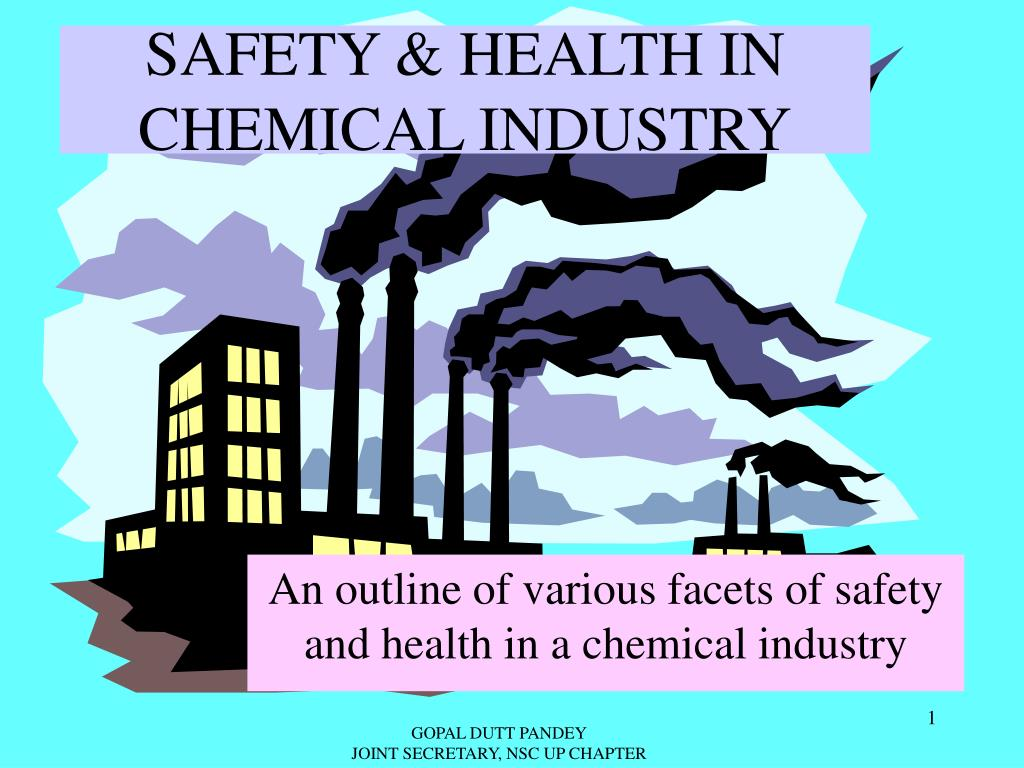
Industrial chemicals and health are crucial topics in today’s society, as the presence of harmful chemicals in everyday products raises serious concerns for both human wellbeing and environmental safety. With countless industrial chemicals used in countless products, it’s vital to prioritize chemical safety to mitigate health risks associated with their exposure. Recognizing the potential for chemical hazards empowers consumers and manufacturers alike to make informed choices, leading to safer products. Organizations like ChemFORWARD are at the forefront of these efforts, providing valuable insights through chemical hazard assessments that help reduce environmental health risks. By understanding the link between industrial chemicals and health, we can shift towards practices that protect both our communities and our planet from the adverse effects of toxic substances.
The intersection of manufacturing substances and public wellness has become increasingly relevant, as the proliferation of synthetic compounds in consumer goods poses numerous dangers. These harmful agents infiltrate various aspects of life, from clothing to electronic devices, leading to serious implications for health and safety. As industries grapple with the impact of chemical exposure, alternative safety protocols and robust assessments emerge as essential practices to safeguard human health. The continual evaluation of product safety and the reduction of potential risks associated with chemical usage are paramount in crafting a healthier environment. Embracing sustainable choices within the chemical industry can significantly mitigate the hazards linked to synthetic materials and promote a more informed approach to product development.
Understanding Industrial Chemicals and Their Health Impacts
Industrial chemicals are an integral part of myriad products that we use daily, from electronics to clothing. However, the harmful effects of these substances on human health and the environment raise serious concerns. Many consumers remain blissfully unaware of the potential dangers lurking in common items. For instance, chemicals such as phthalates and formaldehyde can cause a range of health issues, including respiratory problems and skin irritations. As awareness grows, it becomes crucial for industries to adopt practices that ensure chemical safety, leading towards the production of safe products that prioritize consumer wellbeing.
ChemFORWARD has emerged as a vital resource in the fight against the risks associated with industrial chemicals. By compiling verified chemical hazard assessments, they help companies make informed choices about their supply chains. This commitment to transparency not only aids manufacturers in compliance but also empowers consumers to choose safer options. Understanding how chemicals interact with human health and the environment is key to developing strategies for minimizing risks, and leveraging databases like ChemFORWARD’s can catalyze positive changes in the industry.
The Importance of Chemical Hazard Assessments
Chemical hazard assessments (CHAs) are essential tools in identifying and evaluating the risks posed by various substances in industrial applications. By understanding the toxicological profiles of chemicals, companies can better manage their use, ultimately leading to safer products for consumers and reduced environmental health risks. Businesses often face challenges in tracking toxicological data across their supply chains, but innovation in CHA methodology can streamline the assessment process, making it easier for organizations to maintain compliance and protect public health.
Implementing rigorous chemical hazard assessments allows organizations to determine the carcinogenicity, mutagenicity, and other harmful effects of substances. As highlighted by ChemFORWARD’s work, organizations should align with science-based approaches to classify hazards accurately. In addition, partnerships between industry and organizations focused on chemical safety are crucial. Collaboration facilitates data sharing and promotes a culture of transparency, driving the corporate sector towards a more health-conscious paradigm.
Navigating Environmental Health Risks
The interplay between industrial chemicals and environmental health risks is one of the most pressing issues of our time. Chemicals can persist in the environment, leading to long-term adverse effects on ecosystems. The presence of hazardous substances in water, air, and soil can have harmful consequences not only for wildlife but also for human populations. Recognizing and addressing these environmental health risks is critical, particularly in the face of climate change and other ecological challenges.
Efforts to mitigate environmental health risks should focus on reducing the use of harmful chemicals across industries. By adopting safer alternatives and enhancing regulatory frameworks, companies can contribute to more sustainable practices. Education and advocacy are fundamental components of this transition, informing both industry leaders and consumers about the importance of choosing safe products that benefit not only individual health but also global ecological integrity.
The Role of Innovative Partnerships in Chemical Safety
Innovative partnerships are essential in advancing chemical safety across industries. Collaboration between organizations like ChemFORWARD and private sector entities fosters a shared commitment to enhance public health and safety. These partnerships enable the pooling of resources, knowledge, and expertise—streamlining processes such as chemical hazard assessments and providing broader access to critical data. Effectively, this leads to better chemical management and informed decision-making across the supply chain.
The transformative nature of these collaborations cannot be overstated. By engaging local, regional, and national stakeholders, industries can create a more robust framework for chemical safety. The inclusive approach taken by ChemFORWARD serves as a model for how diverse entities can work together toward a common goal: the elimination of harmful chemicals and the promotion of safe, sustainable products that protect the health of both people and the planet.
Ensuring Consumer Access to Safe Products
In today’s market, consumers are becoming increasingly conscious of the ingredients and materials in the products they purchase. As a result, ensuring access to safe products is more critical than ever. Companies must prioritize transparency in their chemical use to build trust with their customers. This involves not only adhering to regulatory requirements but also providing clear information about the safety and impact of their products on health and the environment.
Initiatives like ChemFORWARD’s database promote informed consumer choices by offering insight into industrial chemicals and their hazards. When manufacturers commit to utilizing safer substances and openly share their findings, they contribute to a culture of health consciousness and social responsibility. Empowering consumers with knowledge allows them to make better purchasing decisions, ultimately fostering a demand for safer and environmentally friendly alternatives.
Addressing the Challenges in Chemical Regulation
The regulatory landscape for chemical safety is complex and poses significant challenges for industries striving to comply with safety standards. One of the worst aspects is the absence of a universal requirement for chemical vetting across all sectors. This gap in regulation can lead to harmful chemicals being used without adequate assessments of their health and environmental impacts. Companies often find themselves navigating a patchwork of regulations that can be inconsistent and confusing.
Efforts to streamline chemical regulations can greatly enhance the safety of industrial chemicals. By advocating for more cohesive guidelines and standards, organizations can help ensure that products meet the necessary safety requirements. Collaboration amongst stakeholders, including regulatory bodies, industry leaders, and health experts, is key to creating a comprehensive and effective regulatory framework that protects public health and the environment.
Advancements in Safer Chemistry Practices
Advancements in safer chemistry practices signify a growing recognition of the importance of reducing chemical hazards. Organizations like ChemFORWARD are pioneering methodologies that allow for better assessments of chemical safety in products. This innovation is crucial for identifying toxic substances and transitioning to safer alternatives that minimize health risks. These advancements not only have implications for consumer products but also play a significant role in manufacturing, agriculture, and numerous other sectors.
Training and educating industry professionals on safer chemistry practices can further enhance compliance and safety. By providing resources and support, organizations can help businesses integrate safer chemical practices into their operations. The shift towards safer chemistry is not only beneficial for health outcomes but can also yield competitive advantages for businesses committed to corporate social responsibility and sustainability.
The Future of Chemical Safety Initiatives
Looking ahead, the future of chemical safety initiatives hinges on continued innovation and collaboration. As awareness of the risks associated with harmful chemicals grows, both consumers and industries are demanding safer products. The establishment of databases, like that of ChemFORWARD, is helping pave the way for a more informed marketplace where chemical safety becomes paramount. These initiatives promote transparency and accountability in the use of industrial chemicals, ultimately benefiting public health.
Future efforts must also emphasize the importance of research and development in safer chemical alternatives. Governments, industries, and academia must work together to fund and conduct studies that further our understanding of chemical impacts. This collaborative effort can drive the creation of innovative safe products and ultimately lead to a significant reduction in environmental health risks associated with industrial chemicals, ensuring a healthier planet for future generations.
Empowering Stakeholders Through Education and Awareness
Education and awareness play critical roles in empowering stakeholders regarding chemical safety. By informing consumers about harmful chemicals and their potential effects, individuals can make better choices regarding the products they use. Educational campaigns that highlight the importance of chemical safety can encourage consumers to advocate for transparency and accountability in the industry, thereby driving demand for safer alternatives.
Furthermore, training programs for industry professionals that address chemical hazard assessments and safer practices are indispensable. Equipping stakeholders with the knowledge and tools necessary to assess and mitigate risks ensures that every stage of product development prioritizes safety. This proactive approach not only minimizes health risks but also cultivates a workforce that is informed and committed to advancing chemical safety.
Frequently Asked Questions
What are the health risks associated with industrial chemicals?
Industrial chemicals can pose a range of health risks, including exposure to harmful substances that may cause cancer, reproductive toxicity, and neurotoxicity. It is essential to conduct regular chemical hazard assessments to understand these risks and protect both human and environmental health.
How can I ensure that the products I use are free from harmful chemicals?
To ensure that the products you use are safe, look for certifications that indicate chemical safety compliance and check for verified chemical hazard assessments. Organizations like ChemFORWARD provide databases that categorize chemicals based on their safety profiles, helping consumers make informed decisions about safe products.
What role do chemical hazard assessments play in environmental health?
Chemical hazard assessments are crucial for understanding the potential environmental health risks of various industrial chemicals. By evaluating factors such as persistence and toxicity, these assessments help in identifying harmful chemicals and promoting safer alternatives in industrial processes.
Are there regulations that govern the use of industrial chemicals in products?
Currently, there are limited regulations that require comprehensive vetting of industrial chemicals before use. Organizations like ChemFORWARD advocate for better regulation by providing accessible data through verified chemical hazard assessments, enabling companies to prioritize chemical safety in their products.
What steps can companies take to reduce chemical hazards in their products?
Companies can reduce chemical hazards by partnering with organizations like ChemFORWARD to access chemical hazard assessments. They can also implement safer chemistry practices, prioritize transparency in their supply chains, and work towards creating products that are free from harmful chemicals.
How is ChemFORWARD addressing the issue of chemical safety in consumer products?
ChemFORWARD is addressing chemical safety by compiling a digital repository of verified chemical hazard assessments. This resource helps companies evaluate the hazards associated with chemicals used in consumer products and make safer choices for human and environmental health.
Can consumers access information about chemical hazards in products they buy?
Yes, consumers can access information about chemical hazards through platforms like ChemFORWARD, which offers data on industrial chemicals and their health impacts. This transparency allows consumers to make informed choices about the products they purchase.
What is the significance of the Roy Family Award in the context of chemical safety?
The Roy Family Award recognizes outstanding partnerships that enhance environmental quality and promote health through innovative approaches. It highlights the importance of collaborative efforts, like those witnessed in ChemFORWARD’s initiatives, in advancing the safety of industrial chemicals and protecting public health.
| Key Point | Details |
|---|---|
| ChemFORWARD’s Role | A database of industrial chemicals to protect human and environmental health. |
| Award Recognition | Winner of the Belfer Center award for environmental partnership. |
| Chemical Hazard Assessments | ChemFORWARD compiles verified chemical hazard assessments (CHAs). |
| Industry Challenges | No universal requirement for chemical vetting in all industries. |
| Public Health Focus | The necessity of societal action to protect public health in a chemical-intensive environment. |
| Collaboration with Companies | Partnerships aim to streamline chemical assessments for safer products. |
Summary
Industrial chemicals and health are critical concerns that intersect with our daily lives through countless products we use. The increasing awareness of the potential health risks posed by industrial chemicals has driven initiatives like ChemFORWARD, which is dedicated to creating a safer environment by providing crucial information on chemical hazards. By establishing a robust database that offers verified assessments of chemical hazards, ChemFORWARD empowers industries to make informed decisions that prioritize human and environmental health. The collaboration between organizations and researchers further amplifies the impact of this initiative, ensuring transparency and safety in product manufacturing.




